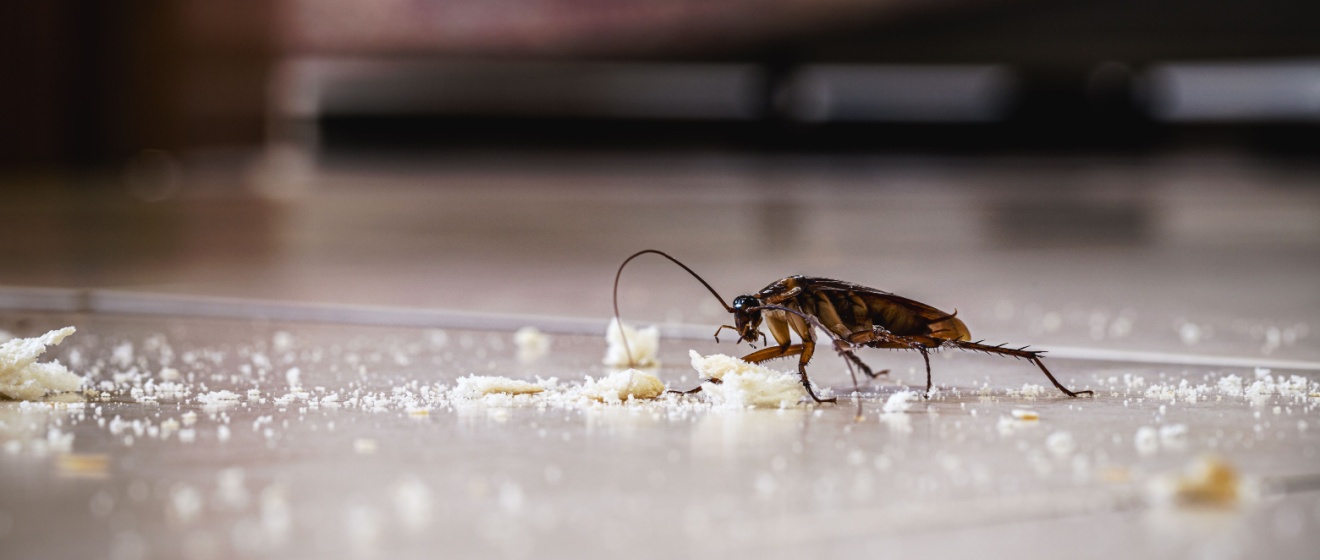Cockroach infestations are a common and concerning issue for apartment buildings in densely populated urban areas like New York City. These resilient pests can pose significant health risks and contribute to an uncomfortable living environment for tenants. Recognizing the signs of a cockroach problem early can be critical in taking swift action to eradicate them before they multiply and spread throughout the building. Here are key indicators and steps to determine if your apartment building is facing a cockroach problem.
Signs of a Cockroach Infestation
- Visible Sightings: The most obvious sign of an infestation is seeing cockroaches themselves, particularly during the day, as they are nocturnal creatures. Spotting them regularly could indicate a significant problem.
- Droppings: Cockroach droppings resemble black pepper or coffee grounds and can usually be found in areas where food is stored, such as kitchens and pantries, or where cockroaches hide, like under sinks and appliances.
- Egg Casings: Look for oval-shaped egg casings (oothecae), which contain multiple eggs. These casings are often found in hidden areas, including behind furniture, in between cracks, or in bookshelves.
- Unpleasant Odors: A heavy infestation can produce a musty, unpleasant odor. This scent comes from the pheromones cockroaches release and can be quite noticeable in closed spaces.
- Damage to Food Packages: Cockroaches are not picky eaters. Evidence of packaging that appears chewed or tampered with, especially for food items, is a strong indicator of their presence.
What to Do if You Suspect an Infestation
- Conduct a Thorough Inspection: Inspect common areas and individual apartments, focusing on kitchens, bathrooms, utility rooms, and any other areas with potential food sources, water, and warmth. Nighttime inspections may reveal more, as cockroaches are more active then.
- Consult with Residents: Communication with tenants is crucial. They may have noticed signs of cockroaches that can help pinpoint the extent and location of the infestation.
- Professional Assessment: If you find evidence of cockroaches, it’s advisable to contact a pest control professional immediately. They can provide a thorough assessment, identify the cockroach species, and determine the best course of action for treatment.
Preventive Measures
Preventing cockroach infestations requires a proactive approach:
- Maintain Cleanliness: Regular cleaning, especially in communal areas and refuse disposal points, can greatly reduce the risk of cockroaches. Encourage tenants to keep their units clean and free of food debris.
- Seal Entry Points: Cockroaches can enter buildings through very small spaces. Seal cracks and crevices around doors, windows, pipes, and other entry points.
- Manage Waste Properly: Ensure that garbage is disposed of properly and containers are sealed. Regularly clean trash areas and dumpsters to minimize attractants.
- Regular Inspections: Schedule regular pest control inspections to catch any potential problems early. A professional can offer tailored advice and solutions for your specific building.
Addressing a Cockroach Problem
If a cockroach problem is confirmed, immediate action is essential:
- Professional Treatment: A professional pest control service can offer effective treatment options tailored to your building’s specific situation, including bait, traps, and insecticides.
- Inform and Educate Tenants: Keep tenants informed about the situation and the steps being taken to address it. Provide guidance on how they can assist in the process, such as by minimizing food exposure and reporting sightings.
- Follow-up: After initial treatment, it’s crucial to monitor the situation to ensure the infestation is fully eradicated. Plan for regular follow-up treatments as recommended by the pest control professional.
Cockroach infestations in apartment buildings can be daunting, but with the right knowledge, preventative measures, and professional assistance, they can be effectively managed and eradicated, ensuring a healthy and comfortable living environment for all residents.

